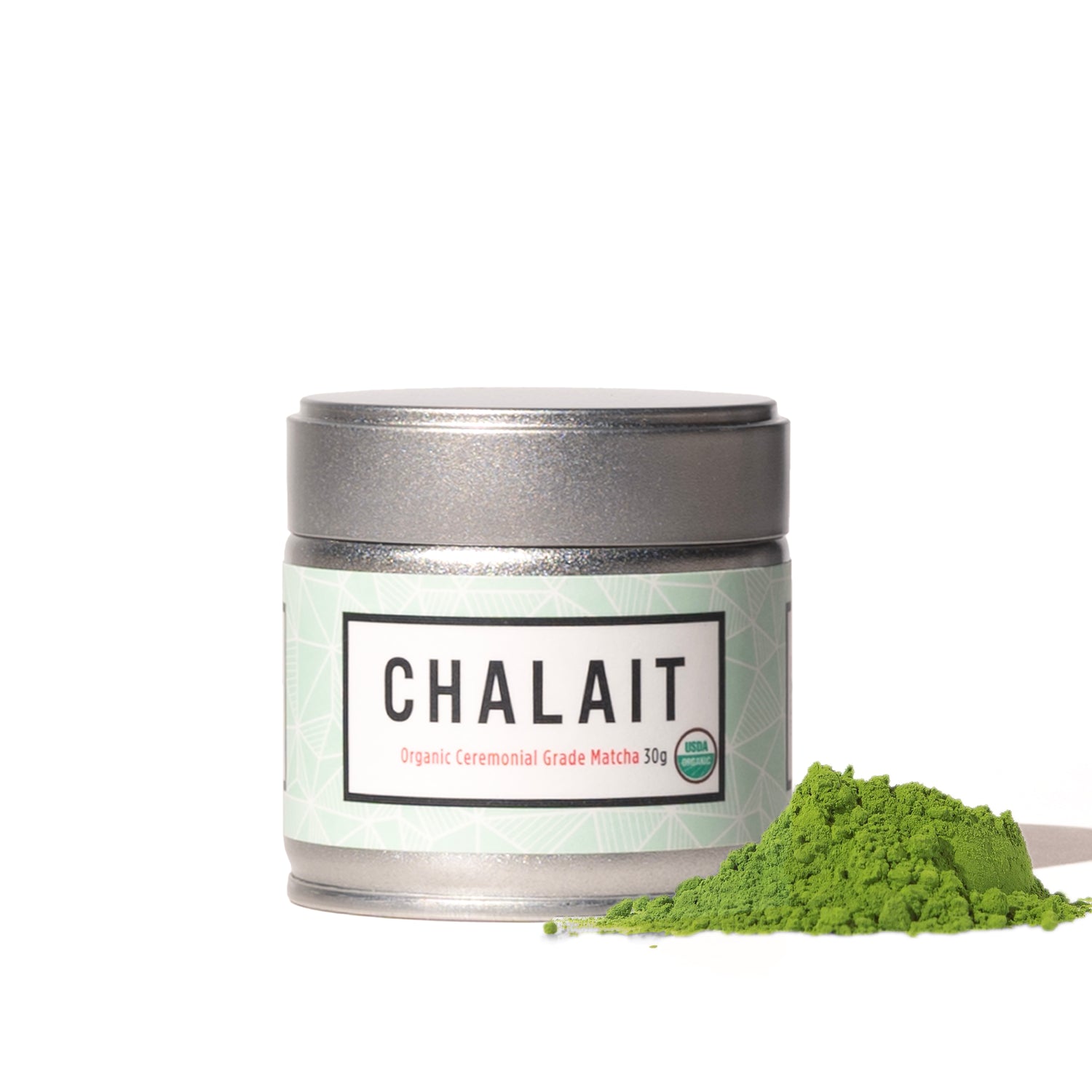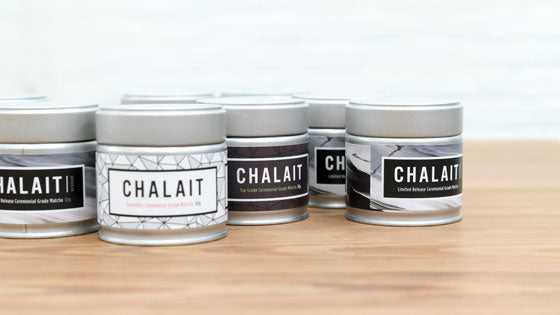Feel free to use our insightful Matcha glossary to help explain the articles and products found on Chalait.com. If you are new to Matcha, you may have come across a host of specialized words which we aim to explain as simply as possible below.
Matcha
Matcha translates to powdered tea powder. While it comes from the same tea plant (Camellia Sinensis) as green tea, its colour and unique nutritional qualities come from its farming practices. During the final three weeks of growth, the plants grow in the shade. Shielding from the sun boosts production of amino acids and L-theanine giving it a potent supply of antioxidants and anti-inflammatories.
The Tencha is ground down to a fine powder - almost talc-like with a vibrant emerald green colour. To drink add 1 tsp of Matcha powder into a matcha bowl, add 2 oz of nearly boiling water and stir with a matcha whisk (Chasen) until frothy.
The Matcha tea has a subtle natural sweetness, with a savoury flavour.
Camellia Sinensis
This plant is used to produce tea leaves. Also known as a tea plant or shrub. Interestingly, the Camellia Sinensis produces the Matcha tea, white tea, black tea, green tea and oolong tea. Variations in cultivation including soils, shading, climates and time of harvesting along with differences in processing, create different types of tea.
Catechin
Catechins are a type of flavonoid and anti-oxidant. Matcha tea, in particular, is rich in Catechins, in particular, EGCG.
Ceremonial Powder
Ceremonial grade Matcha Powder is a premium grade of Matcha. It comes only from Tencha and is shade grown. Real Ceremonial Matcha Powder is a vibrant green. Perfect for all Matcha beverages
Chashaku
A Chashaku is a traditional matcha spoon. Use this spoon to administer the exact amount of matcha. A chashaku generally has a bamboo construction and is about 18cm in length; with the curve at the base forming the 'spoon'.
Chasen

A Chasen is also described as a Macha Whisk. Traditionally, a chasen has a bamboo construction. To use the whisk, mix the matcha powder and water in a "W'" motion until froth forms.
Koicha
Koicha is the traditional method of preparation of Matcha. Also known as thick Matcha. The result is a matcha drink which has a syrup consistency with a sweet/savoury umami taste.
L-theanine
L-theanine is an amino acid which has been shown to improve levels of GABA, serotonin and dopamine. This compound is found in abundance in Matcha, with smaller amounts in black tea and also mushrooms. Studies suggest that L-theanine improves mental focus, sleep satisfaction, relaxation, cognitive performance and even weight loss.
Learn more: Matcha and Anxiety
Sencha
Sencha is a favorite tea in Japan. Unlike Matcha, Sencha grows in the full sun and has a different taste and also a different preparation method. The colour of the sencha is green with gold and brown undertones. To drink, the Sencha leaves steep in water, and then the leaves are discarded. To taste Sencha is grassy with a slightly bitter after taste
Matcha Crema

Crema refers to the creamy, frothy layer on top of a thin Matcha tea.
Shading
This refers to the unique tea growing techniques specifically for Matcha production. A large framework surrounds the camellia sinensis plants, and during the final three weeks of growth, layers of black burlap cover the plants. Shading to near pitch-black darkness encourages the plants to boost its production of chlorophyll and nutrients.
Tencha
The tea product before it is ground to a fine powder to become Matcha is called Tencha. The tea plant is shaded for about three weeks before harvesting. Once harvested, the leaves are steamed and dried. It does not go through a rolling process. The final tencha product contains only the pure leaves, with no leaf stems or veins.
Tencha is a raw material, and while you can enjoy tencha to drink as a loose leaf tea - it is challenging to come across.
Umami
While there is no exact English translation, the Japanese term Umami is best described as a savoury flavour. You may the notice Umami flavour in Matcha products and articles referring to Matcha. While we have four senses (saltiness, sweetness, bitterness and sourness), the Japanese describe Umami as a fifth sense - savoury.
Usucha
Usacha is also called Thin Matcha with a latte-like property. To make Usucha Matcha use half a teaspoon of matcha with 2.5 oz of hot water. Using a chasen, whisk the mixture in a "w" motion until thick froth forms. Usucha has a light taste with only a slight bitterness.
Learn more: How to make Usucha



